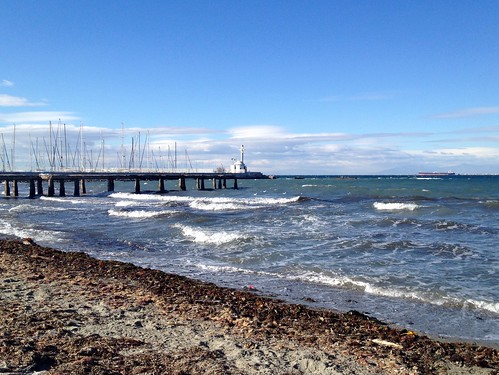Most of the studied compounds are characterised by a excellent chemical and metabolic steadiness, even if the highest incubation time (two hrs for microsomal preparations) was applied. For compound fourteen, a hydroxylation pathway (common for all derivatives) and a quite exceptional reductive debromination response, ended up noticed. Under, a thorough fragmentation study of the items of its biotransformation is introduced. Figure 4 gathers proposed structures of common ions alongside with m/z attributes, while figures five and 6 existing experimental spectra for compound fourteen and its a few principal metabolites.
The identification and structural elucidation of compound fourteen metabolites was executed dependent on the presence of product ions, in relation to the fragmentation of the parent compound. The fragmentation pattern was investigated by the fragmentation of the parent compound in a collision cell in the merchandise ion manner of the mass spectrometer. The protonated molecule generates several item ions. The most plentiful ions are F4 and F3 (Fig. four), with an precise mass of m/z 235.9950 and 197.9872, respectively. The fragmentation pattern is offered in Fig. 5. Ions F4 and F5 are formed by the breakage of the S-C bond in a tiohydrazone moiety,  nonetheless, the development of F4 is not a common cleavage in fragmentation pathways. The formation of an unstable ion of m/z 434.9484 (very poor sign abundance, Fig. 5A and Fig. seven) is probably adopted by a launch of secure 3-bromo-four-hydroxybenzonitrile (not seen in the spectrum) and the simultaneous development of F4. Ions F1 and F3 are fashioned by the cleavage of the N-N bond. Ion F6 is formed from F5 soon after the reduction of the NO2 radical [37]. The launch of the OH radical can be also proposed for the formation of F1 from F2. Typically, the collision induced dissociation of pseudomolecular ions leads to the development of even electron fragments, nevertheless, the odd electron species can also be formed [37]. Hydroxylation (M1). The oxidation of carbon atoms is one particular of the most common reactions catalyzed by CYP [38]. Monohydroxylated metabolite (M1) was discovered in a chromatogram at m/ z 587.0149, [M+H]+. The detected product ions: F1, F2, F3, F5 and F6 (Fig. 4, 5B) advise that hydrozone moiety is unchanged. It can be assumed that the hydroxylation is positioned on a benzensulfonamide ring, most probably in the methyl group, in accordance to the most typical response catalyzed by CYP enzymes [38] and the existence of F7 and F8 ions on mass spectra. F8 is fashioned by the decline of water from ion F7, which is typical for hydroxylated C-OH bonds. Other, less possible structures include the immediate hydroxylation of the phenyl ring or the S-oxidation of thiohydrazone moiety. The lack of the F4 ion in the fragmentation spectra of all +sixteen Da 18037921metabolites strongly supports the proposed CH3 hydroxylation. Nonetheless, the MS/MS fragmentation sample did not let entire confirmation of this speculation. Numerous of the examined compounds ended up ready to type two hydroxylated metabolites. The identical overall mass, isotopic pattern and fragmentation pathways of equally monohydroxylated metabolites CP 127374 Hydrochloride propose that they could be a pair of geometrical isomers. An exemplary chromatogram is demonstrated for compound 13 (Fig. 3B).
nonetheless, the development of F4 is not a common cleavage in fragmentation pathways. The formation of an unstable ion of m/z 434.9484 (very poor sign abundance, Fig. 5A and Fig. seven) is probably adopted by a launch of secure 3-bromo-four-hydroxybenzonitrile (not seen in the spectrum) and the simultaneous development of F4. Ions F1 and F3 are fashioned by the cleavage of the N-N bond. Ion F6 is formed from F5 soon after the reduction of the NO2 radical [37]. The launch of the OH radical can be also proposed for the formation of F1 from F2. Typically, the collision induced dissociation of pseudomolecular ions leads to the development of even electron fragments, nevertheless, the odd electron species can also be formed [37]. Hydroxylation (M1). The oxidation of carbon atoms is one particular of the most common reactions catalyzed by CYP [38]. Monohydroxylated metabolite (M1) was discovered in a chromatogram at m/ z 587.0149, [M+H]+. The detected product ions: F1, F2, F3, F5 and F6 (Fig. 4, 5B) advise that hydrozone moiety is unchanged. It can be assumed that the hydroxylation is positioned on a benzensulfonamide ring, most probably in the methyl group, in accordance to the most typical response catalyzed by CYP enzymes [38] and the existence of F7 and F8 ions on mass spectra. F8 is fashioned by the decline of water from ion F7, which is typical for hydroxylated C-OH bonds. Other, less possible structures include the immediate hydroxylation of the phenyl ring or the S-oxidation of thiohydrazone moiety. The lack of the F4 ion in the fragmentation spectra of all +sixteen Da 18037921metabolites strongly supports the proposed CH3 hydroxylation. Nonetheless, the MS/MS fragmentation sample did not let entire confirmation of this speculation. Numerous of the examined compounds ended up ready to type two hydroxylated metabolites. The identical overall mass, isotopic pattern and fragmentation pathways of equally monohydroxylated metabolites CP 127374 Hydrochloride propose that they could be a pair of geometrical isomers. An exemplary chromatogram is demonstrated for compound 13 (Fig. 3B).
The reversed-stage LC and LC-MS/MS chromatographic techniques had been effectively developed for the detection of fifteen compounds from a new class of compounds demonstrating antiproliferative exercise. The analytical strategy growth stage integrated the suitable stationary and mobile period assortment and an optimization of the gradient elution software in buy to obtain the sufficient retention of all fifteen compounds and a resolution suitable to resolve pairs of isomers and the shaped biotransformation items. Exemplary chromatograms of compound 13 are offered in Fig. 3B.
